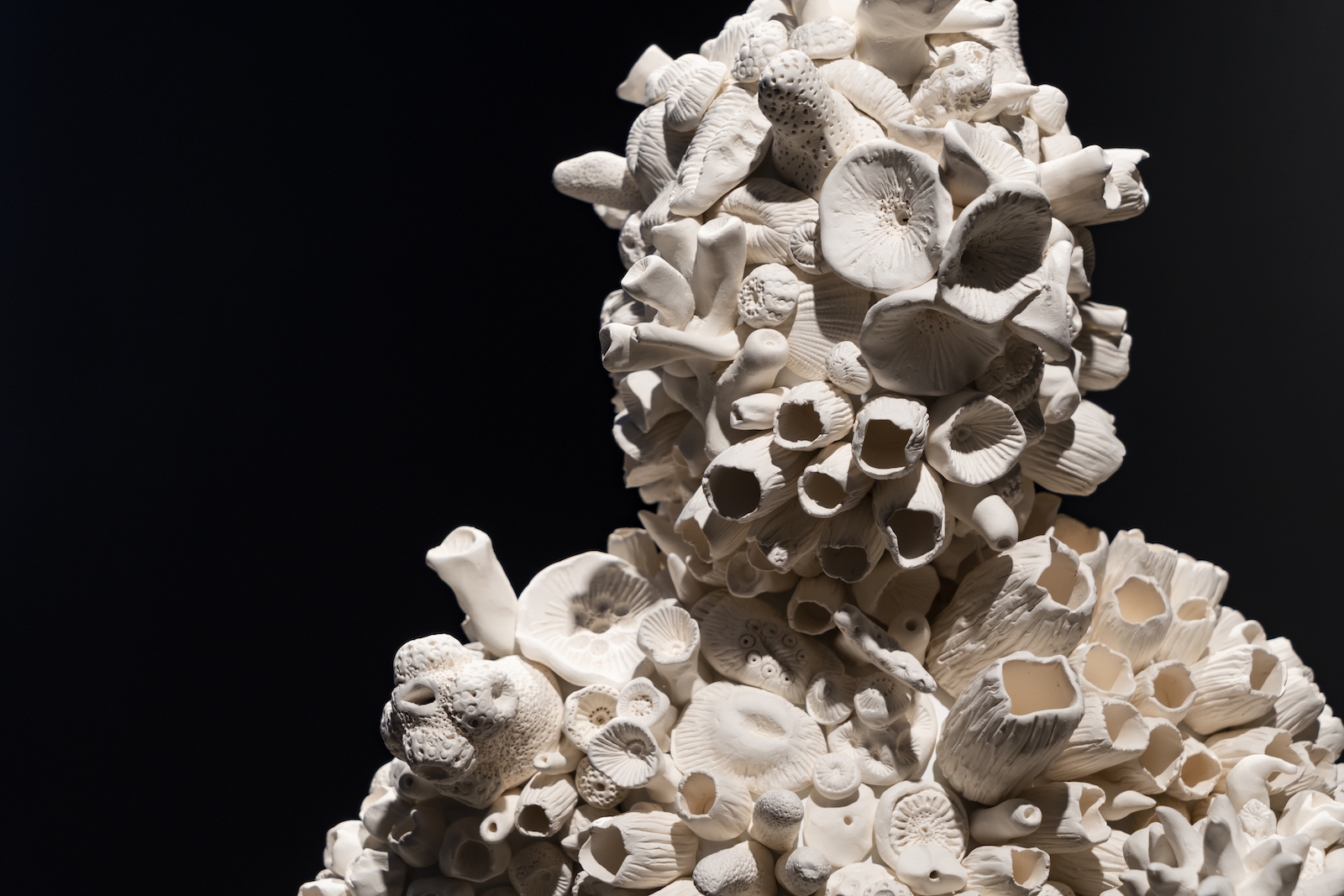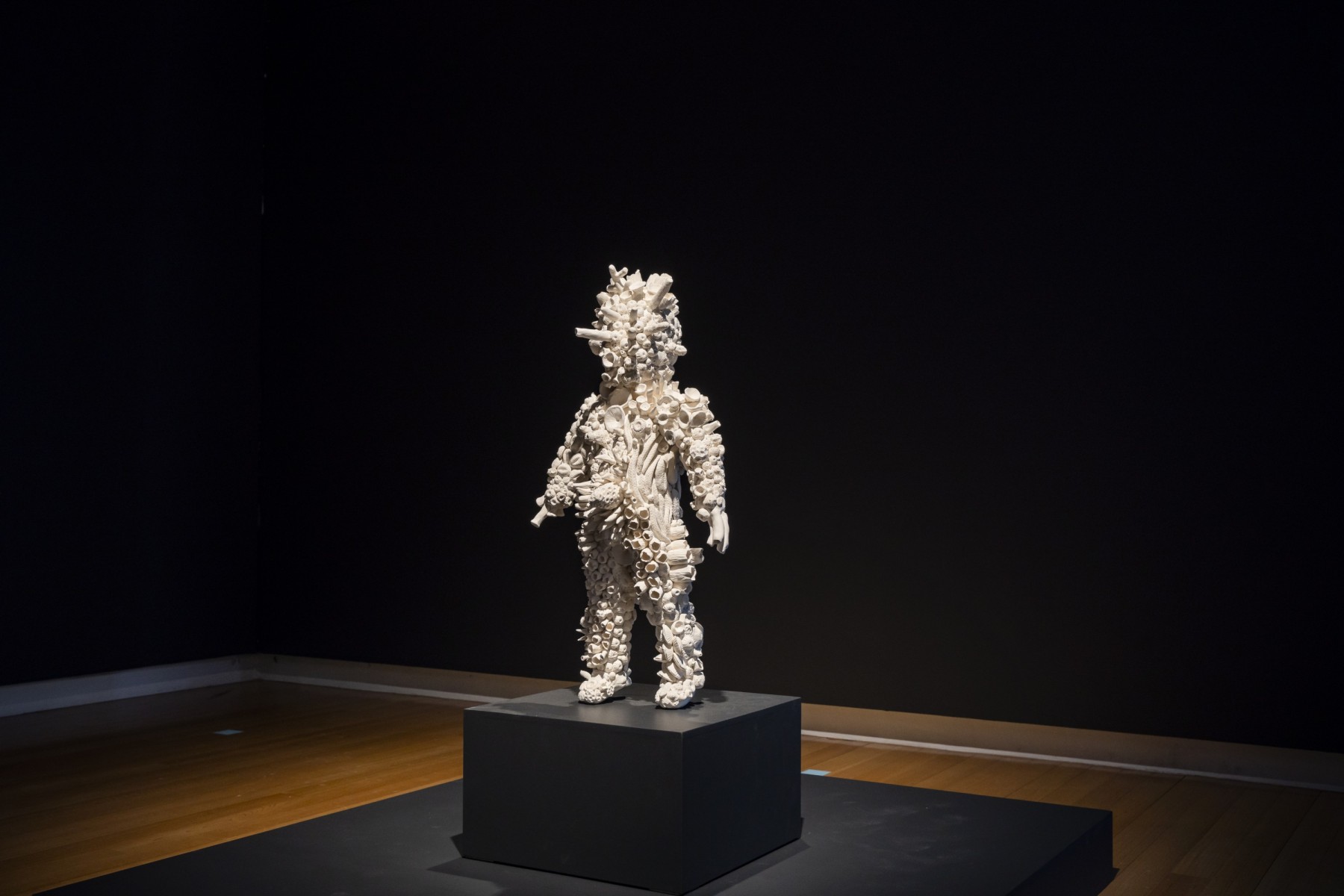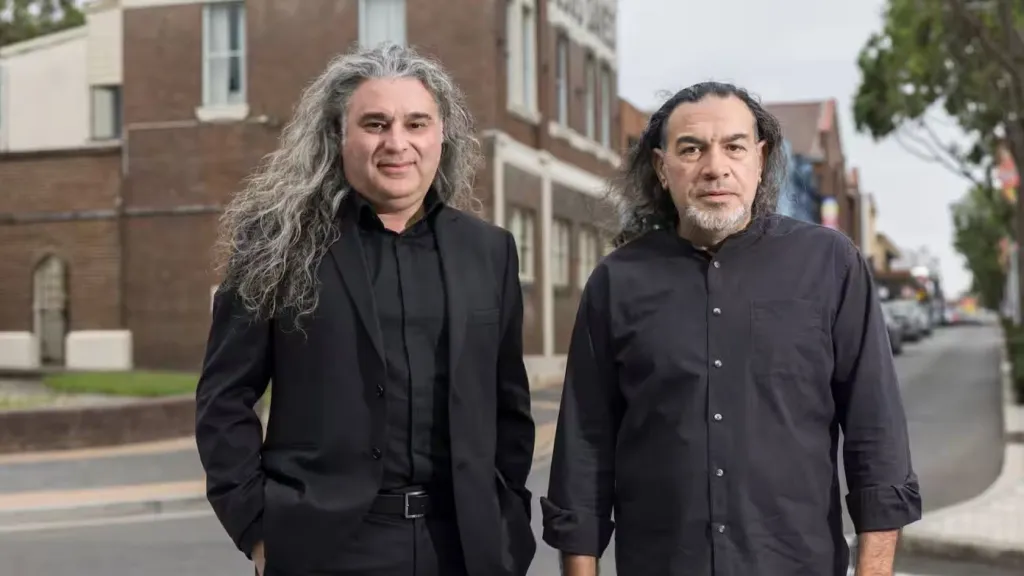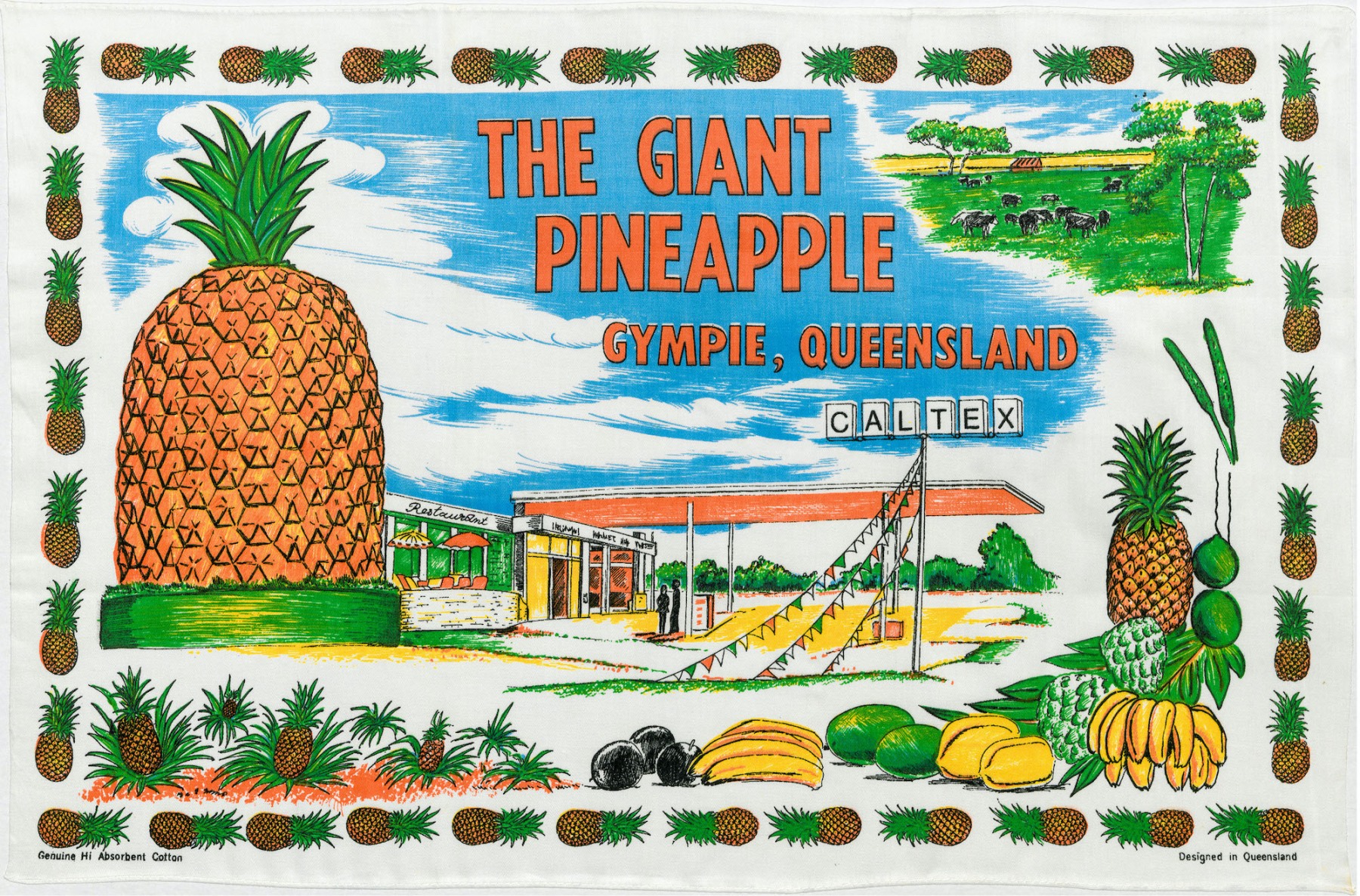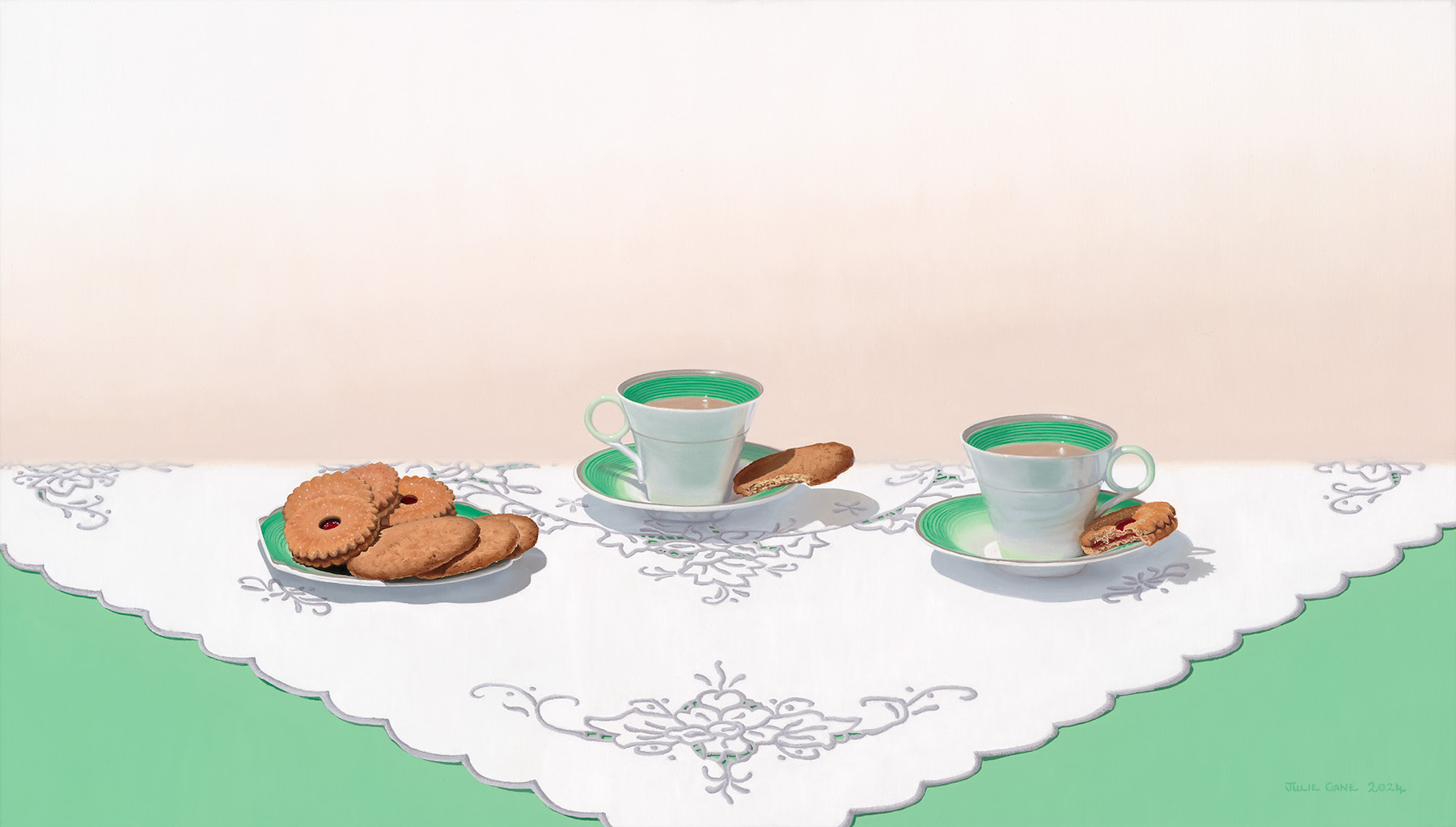In sharp relief with the student-throngs of campus, QUT Art Museum is quiet and dark. Their current exhibition showcases Australian-Japanese artist couple, Ken + Julia Yonetani, and the duo’s ongoing engagement with the environment. Following a long and impressive list of exhibitions around Australia (from Jan Manton to 4A and the National Gallery of Australia), To Be Human is the first major survey of the two. Throughout the galleries, low-level hushing/rushing sounds, a distant music box, and the artist’s voices combine into an ambient background. In both directions sit white-washed coral forms.
The most enticing work in the show is three smallish fiberglass sculptures, covered all over in coral made from white porcelain clay. Dysbiotica (Deer) (2020) mimics the mounted bust of a slain deer. The other two, Dysbiotica (Next Generation) (2020) take the form of small humans. They are doll-like in size and proportions, but these figures are faceless, unclothed, and fragile: designed neither for touch nor for play. Like the puppets and mannequins of early Surrealism, they are also quietly disturbing. Their hands are replaced with short tubular tentacles. Spikes and rounded protrusions extend from faces and stomachs alike. And all over a repetition of urchins suggest cancerous growths, fossification, and the bleaching of a dying Barrier Reef. This fusion of humanity and nature does not spell an idealised future for our children but is instead an unnerving warning. Disbiotica references the“imbalance or impairment of a living system’s microbiota” and conjures the perils of a dawning dystopia.
Equally striking are five chandeliers. Yet the artists have undone the glamour of the lights’ fin-de-siècle heritage with an unnaturally bright neon green, bringing to mind the EXIT lights of stairwells and shopping centres. The source of the glow is UV lighting and uranium glass, the works a response to Fukushima’s 2011 nuclear disaster. This work is also an unsettling fusion, this time of the old and the new. The artwork titles, Crystal Palace: The Great Exhibition of the Works of Industry of all Nuclear Nations followed by the dedication of each chandelier to a current nuclear nation (the exhibition houses five out of a larger series of 32) reiterate this temporal collision.
These two works establish major themes and devices that carry throughout the show: an interest in natural processes, an urgent response to environmental destruction, childhood allusions and an unsettling tone. Imagine Tree (2011) is a Patricia Piccinini-like digital film. It transforms the ‘breathing’ stomata of leaves into a strange orifice (part eye, vagina, lips) that expands and contracts like lungs. Ultrabuddha (2010) makes a golden seated buddha in the metallic visage of Star Wars’ robot 3-CPO. Three Wishes (2014) captures a glass fairy in a spinning music box. All five remaining works sculpt everyday objects and natural shapes in white salt, sugar or ceramics.
The exhibition falters with FUMIE Tiles (2003), a series of oversized butterfly reliefs. In contrast with the detailed, textural, and evocative surfaces of their later works, these are unrefined. The accompanying didactic reveals the work was originally conceived as a participatory floorwork for the CSIRO Discovery Centre, where “more than 2000 tiles were broken in less than an hour”. This restaging, where only a few tiles are hung on the wall, each framed individually in timber, removes the scale, participation, and destruction of the work, and consequently its impact.
Reflecting critically on the show, I wonder if the work’s straightforward didacticism and understated tenor best serve its climate message. And although the artist’s fanciful appeals to genie’s wishes and superhero saviors are suited to children, the artwork’s complex engagements with science and fragile finishes are not. Out the front of QUT Art Museum, in last year’s Botanica, Simone Eisler and Kellie O’Dempsey addressed similar issues to the Yonetanis, of the forest and the sea. Eisler’s Museum of our Lost World reimagined a rose garden as a spectacular patterned graveyard, filled with the white skeletal (cast gypsum) remains of animals, fish and coral. Among the trees, O’Dempsey’s What did you say combined neon and digital lips with a haunting breathy soundtrack that asked: “Can you hear me, are you listening?” Set amongst Brisbane’s City Botanic Gardens, both works demonstrated the possibility for climate activism to be evocative, embodied and hyper-accessible. I imagine that Ken + Julia Yonetani’s practice is also best experienced on a larger scale, in immersive and interactive encounters.
Louise R Mayhew is an Australian Feminist Art Historian and the Founding Editor of Lemonade.

